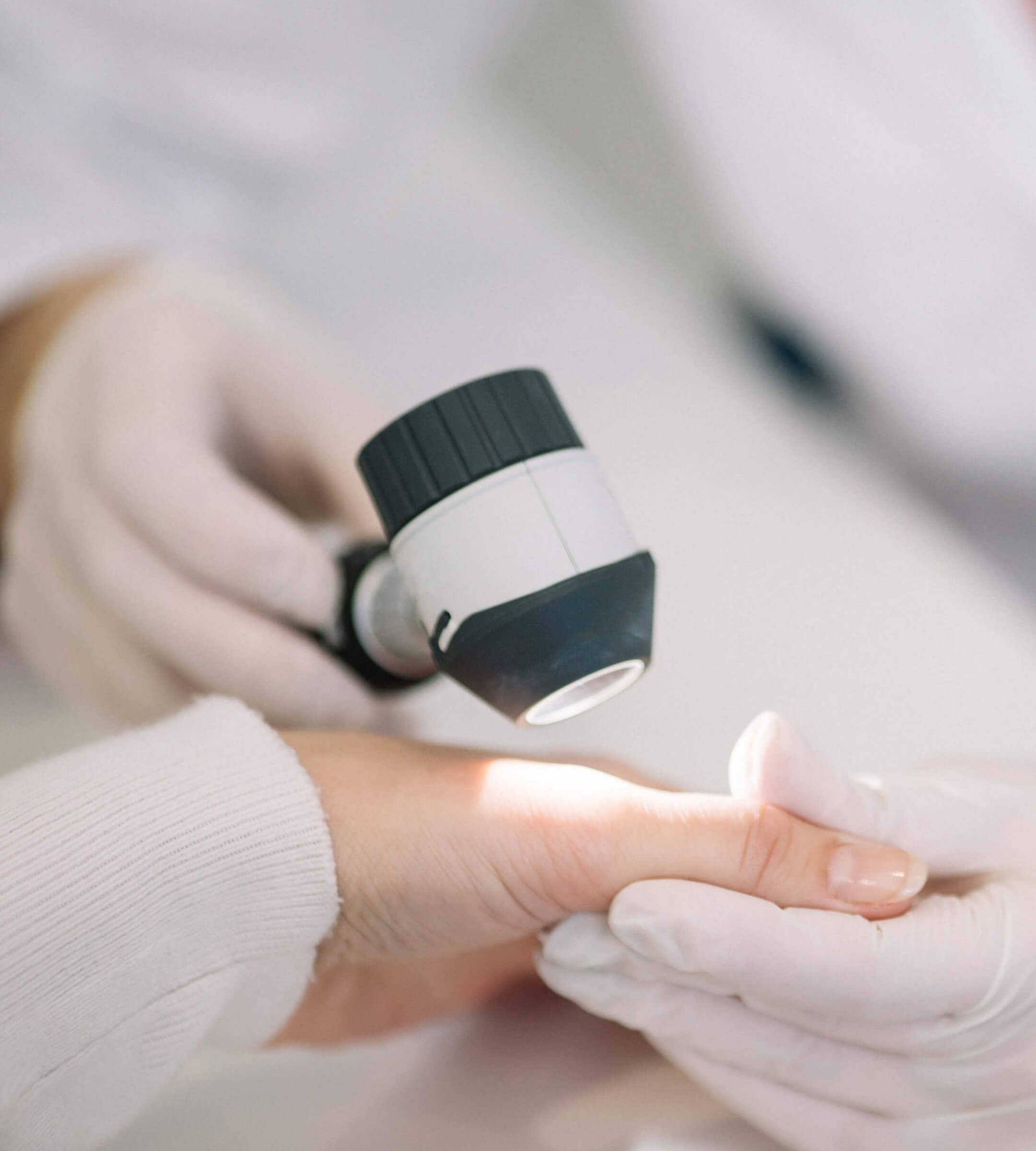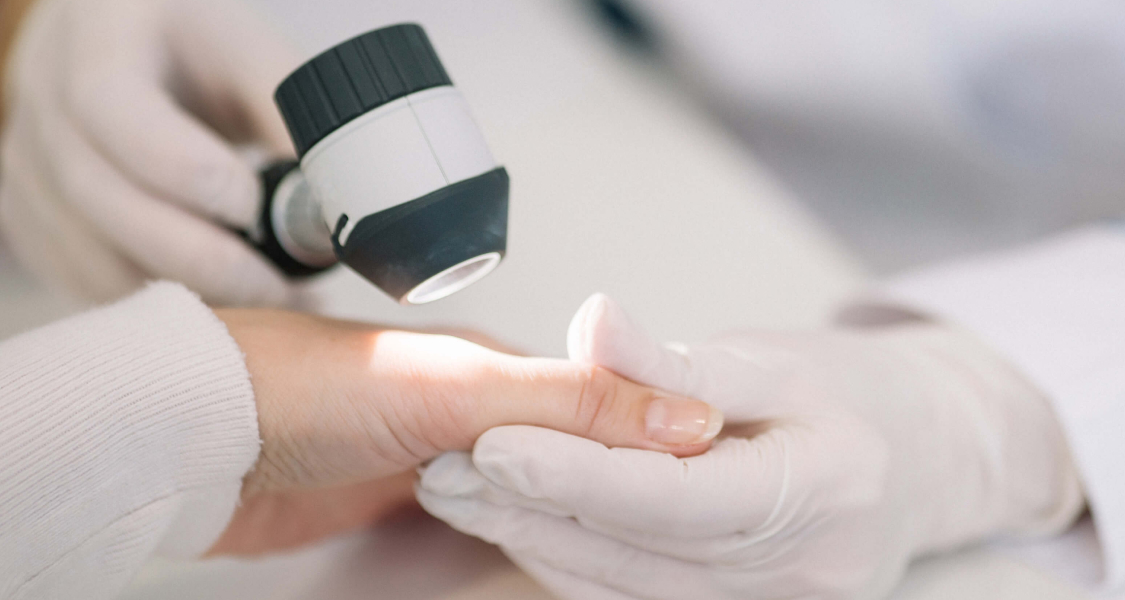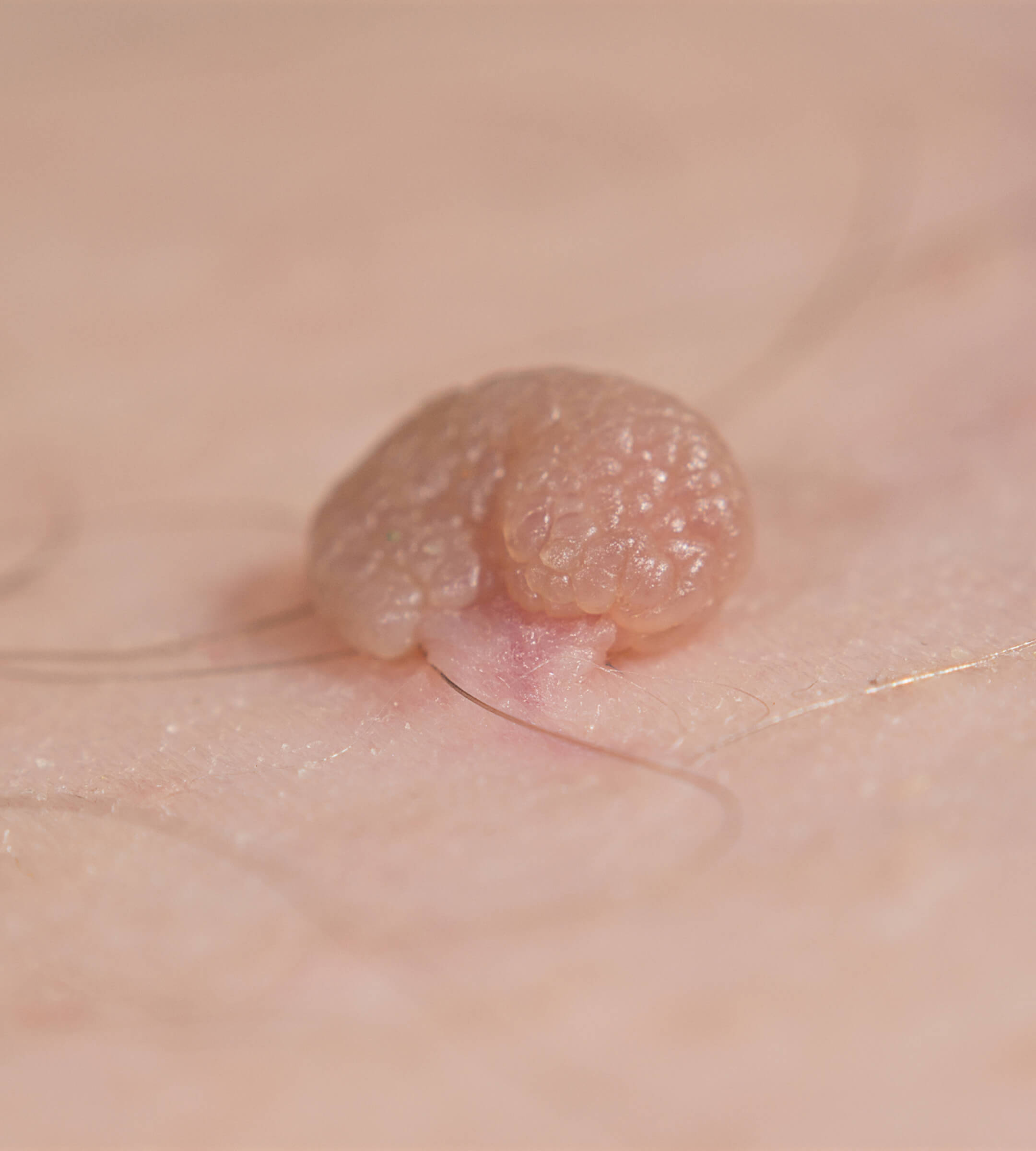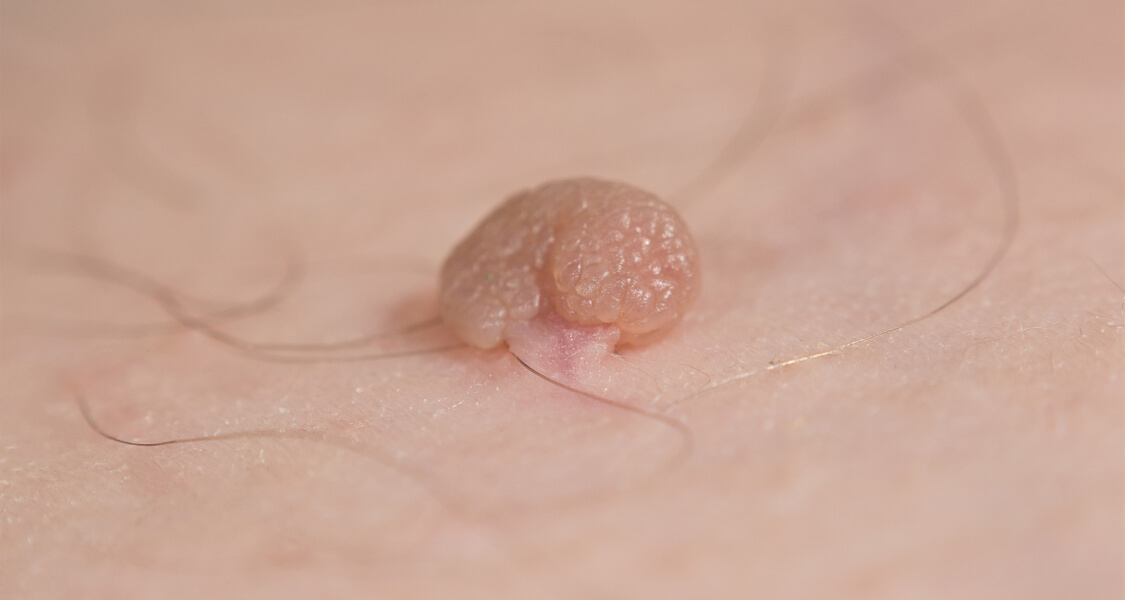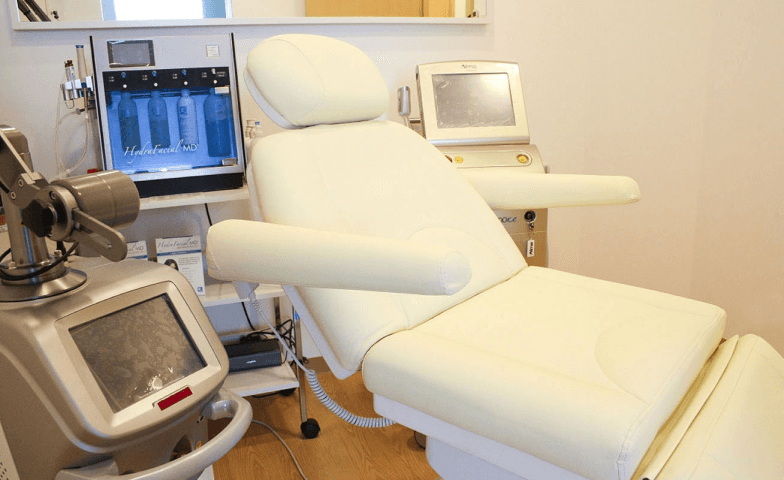Common Benign Skin Tumours
All individuals may acquire different benign skin tumours in their lifetime. They are easily visible and can affect any age group.
-
Dermatofibroma
Most commonly seen in the extremities, these growths may be a reaction to minor injuries or insect bites.
-
Hemangioma
This is formed due to an abnormal buildup of blood vessels.
-
Epidermal inclusion cyst
Also called keratinous cyst, this fluctuant nodule with a central punctum is the most common type of cutaneous cyst and can occur anywhere in the body.
-
Lipoma
Lipoma is an abnormal growth of fat cells. They tend to grow slowly and are usually solitary.
-
Melanocytic naevi (Moles)
Melanocytic naevi, more commonly known as moles, are benign (non-cancerous) skin growths caused by abnormal collection of pigment producing cells in the skin. Moles initially appear flat but may become raised and dome-shaped later in life.
-
Seborrheic keratosis
Seborrheic keratoses are superficial skin growths commonly located on the face. They can also occur on the body and groin. They initially appear brown and slightly raised, but may enlarge and become darker and more numerous with age. Removal of these growths is commonly performed by dermatologists for cosmetic reasons.
-
Acrochordon (skin tag)
Skin tags are skin-coloured growths which commonly occur on the neck, underarms, groins and eyelids. Multiple skin tags may appear around the same area. They are harmless, and can easily be removed by the dermatologist using minor surgery.
-
Wart
Warts, highly contagious skin growths, are caused by the human papillomavirus (HPV) and can occur anywhere in the body.
-
Dermatosis papulosa nigra
Often found in the neck and face, especially in the eye region, these growths are common in people with dark skin color.
-
Milia
Occurring primarily in the faces of women and newborns, milia is a cystic collection of keratin under the epidermal layer of the skin.
-
Sebaceous Hyperplasia
Sebaceous hyperplasias are small yellowish lumps often seen on the cheeks. They occur when there is an overgrowth of oil glands just beneath the surface of the skin. These are benign and may be treated with electrosurgery (using a weak current to destroy the growths) or laser.
-
Syringomas
Syringomas are small flesh-coloured lumps that occur commonly just below or around the eyes. They form when there is an overgrowth of sweat ducts in the skin. Syringomas may be treated with laser or electrosurgery.
